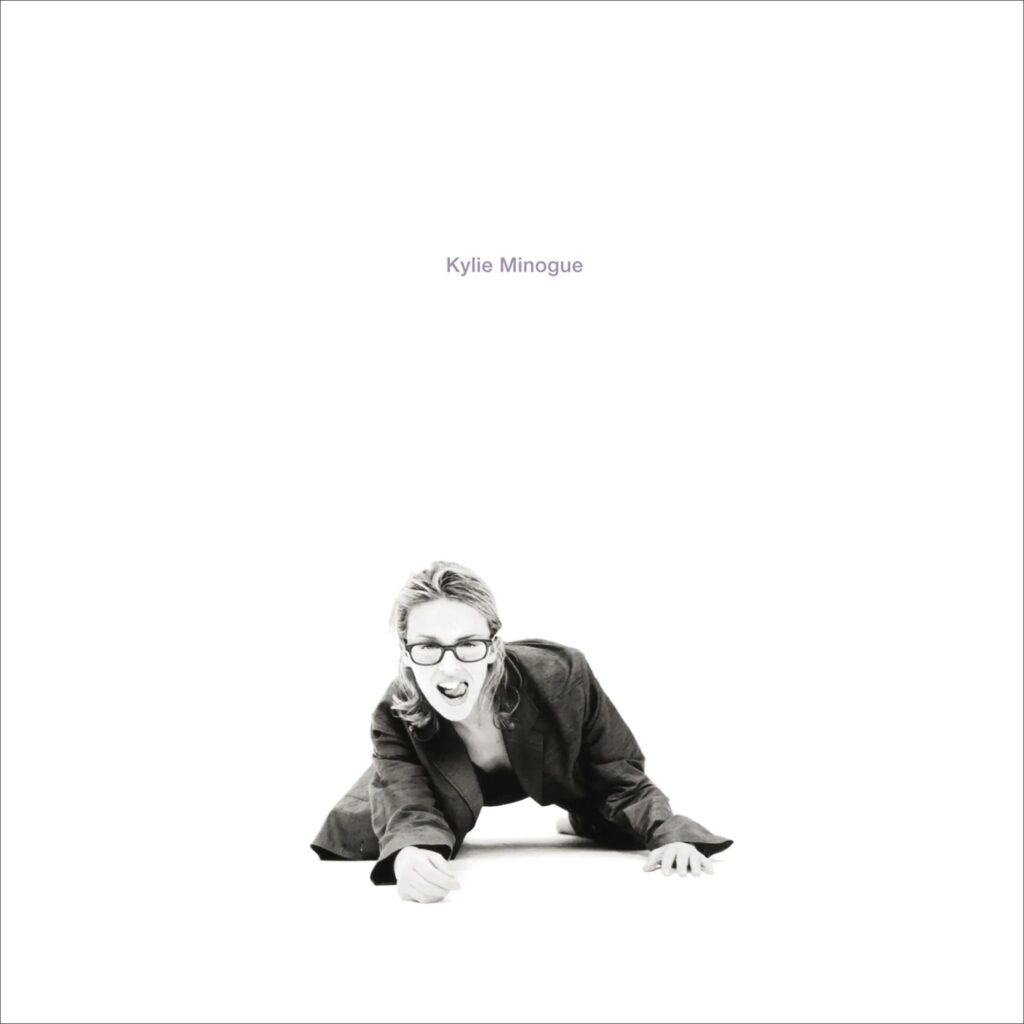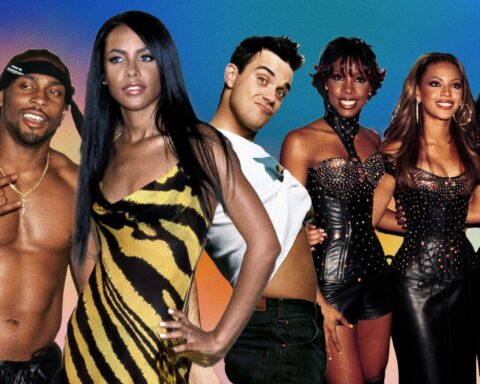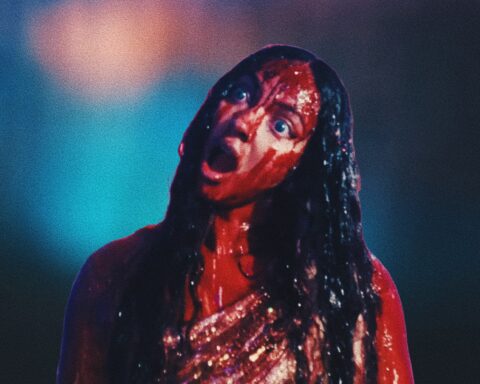In the summer of 1987, millions of people tuned in to watch a 19 year old Kylie Minogue get married. Granted, Kylie Minogue helped popularize Neighbours, the Australian soap opera, but people were unquestionably obsessed with her. Almost 20 million Brits tuned in for her wedding episode when it aired in the UK, too. Around the same time, Minogue released her debut single, ‘I Should Be So Lucky.’ The song hit #1 in her home country and brought her breakthrough success in other global markets. Then she re-released her cover of ‘The Loco-Motion’ which became a juggernaut hit all over the world.
From that moment on, Kylie Minogue was officially music’s newest Pop princess. She became familiar with the top of the charts, notching up #1 singles and albums as the 80s bled into the 90s. By her 4th album, Let’s Get To It, she’d begun co-writing and had introduced more sensual lyrics. Her vocals were strong, and while critics didn’t pan the album, Nick Griffiths famously called it ‘still for virgins.’ Let’s Get To It underperformed in comparison to her previous efforts and it was clear Minogue needed to shake things up in a big way.
With Kylie Minogue, her 1994 self-titled album, she ditched the Bubblegum image and breathed new life into her career. 30 years later, it continues to be one of Minogue’s strongest conceptual albums. When considering her recent string of run-of-the-mill singles, it might be time for her to revisit this moment of reinvention as well.
The mid-90s brought a time of change for the music industry. Grunge bands like Nirvana and Soundgarden had a massive impact on the scene but their popularity was starting to simmer. Artists like Snoop Dogg and Tupac were bringing Rap to new mainstream heights, R&B thriving in a myriad of ways. Even Madonna was incorporating these elements on her albums Erotica and Bedtime Stories. In the UK, trip hop was gaining momentum thanks to Massive Attack and, eventually, Portishead.
While all these genres were starting to drive culture forward, Minogue was taking note. In early 1993, Minogue did not renew any contracts with her big record label. Instead, she signed to Deconstruction, an indie label once described as ‘marrying underground credibility and diversity with an open-minded attitude towards pop.’
“I liked [Destruction’s] attitude,” Minogue said in her 2002 biography, Kylie Naked. “I quite liked their arrogance, and I liked the vision they had.”
And the vision was clear: rebrand Europe’s sweetheart ASAP. Because of this, Minogue went into the studio with a mix of fresh and familiar producers. She’d become known for a sugary pop sound but swapped it out for darker, more atmospheric music. Trip-hop mixed with elements of dance further pushed against the grunge scene.
Kylie Minogue was released in September 1994. The album debuted at #3 and #4 in Australia and the UK respectively. Thought it didn’t top the charts, Deconstruction’s gamble still paid off. She succeeded in reemerging as an artist in control. Critics were on board, too. They praised Minogue’s vocal performances and experimental productions.
“I feel like I’m at the beginning of a completely new adventure,” Minogue said.
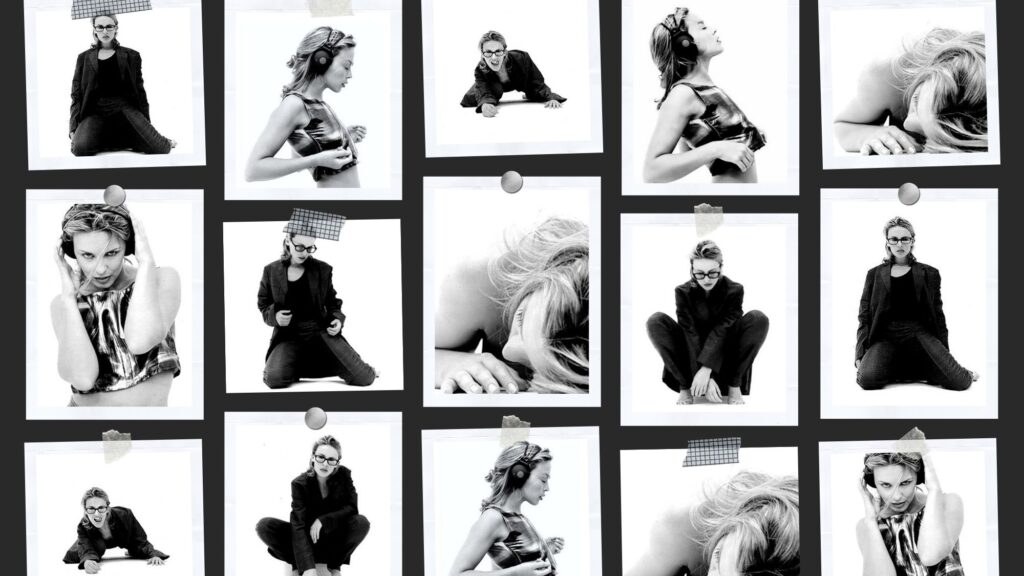
The lead single, ‘Confide In Me,’ was a flawless reintroduction too. The haunting intro is nothing short of cinematic and fit for a ‘survival horror’ video game like Resident Evil. There’s a piano tinkering underneath a violin, guitar, and a soft, whooshing vocal. When the strings fully kick in, a Middle Eastern twang is accompanied by muted percussions. Each instrumental layers builds unlike any other Kylie song before or after it. Produced by David Seaman and Steve Anderson—known collectively as Brother’s In Rhythm—‘Confide In Me’ is one of the few ‘perfect’ songs in Minogue’s entire discography. An expanded version was re-released in 2003 with remixes and acoustic versions. This bonus disc includes a gritty, dirty, bass-heavy, 90s remix from She Wants Revenge’s Justin Warfield. It doesn’t surpass the original but goddamn is it good.
The single debuted at #31 on the Australian charts but shot to #1 the following week. It peaked at #2 in the UK and #39 on Billboard’s Dance Club chart, her only single to chart in the States in all of the 90s. ’Put Yourself In My Place’ was the album’s second release. Unfortunately, it was a dud on the charts and missed the Top 10 in her key markets.
‘Surrender’ and ‘Automatic Love’ are standout album tracks but it’s the strength of the two aforementioned singles that solidify Kylie Minogue as one of her strongest albums to date. ‘If I Was Your Lover’ is the album’s biggest miss. It’s not a horrible song but far too similar to what we’d already heard from her. Despite this misstep, Kylie Minogue is a subdued, hypnotic affair which helped raise the bar for decades in how seriously people took creating her albums.
But in the entertainment industry, image is everything. Even the best music can tank if the visuals aren’t up to snuff. For her first three albums, Minogue played it safe. In these covers, she smiled and exuded the approachable ‘girl next door’ vibe. With Let’s Get To It, she shed her good girl image—and the smile—for the first time.
British photographer Rankin and Katie Grand, one of fashion’s most prolific creatives, were the creative team behind the album imagery. Grand put Minogue in two juxtaposing looks: a dark suit as well as a metallic crop top. The former outfit was less expected and seemingly allowed Minogue to create a character truly outside of herself. The image chosen for the cover, as seen above, features a more carnal depiction of Minogue. She crawls towards the camera, her tongue mid-lick. The smile is back but, this time, it’s far more sinister.
The imagery featuring the crop top can’t go unrecognized. By also having her don a pair of over-the-ear headphones, Grand wove in a cyberpunk aesthetic. There was a hint of technology and a nod to the future which also gets explored via her music videos (more on that in a bit).
Photographers Ellen von Unwerth and Katerina Jebb partnered with Minogue on a limited edition coffee table book. von Unwerth, a photographer who has made a career out of brilliantly capturing sensuality, understood the assignment. Together, she and Jebb produced sultry variations of a bombshell.
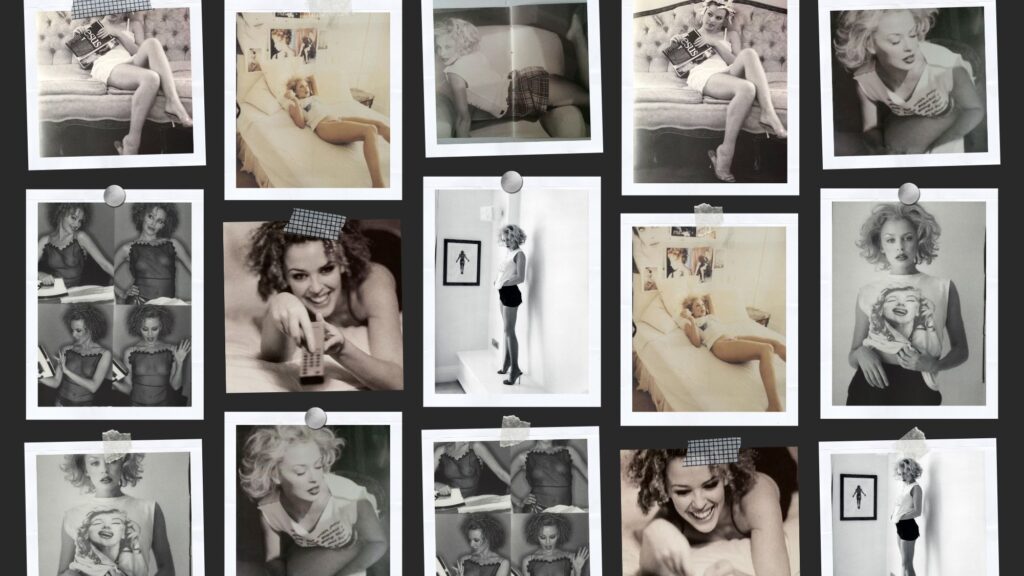
When it came time to film the music videos, Minogue and her team carried through the album’s theme of reinvention and exploration. The still imagery was strong in black-and-white, but Minogue leaned into total color saturation when creating her motion assets.
For ‘Confide In Me,’ director Paul Boyd give us his interpretation of the digital age. 6 versions of Kylie come into the frame with different backdrops—and presumably hotline numbers—each one an option the viewer can ‘choose.’ There’s Latex Kylie, Candy Kylie, Army Kylie (which made sense since she was also filming Street Fighter at the time), and more. Regardless of which Kylie shows up on the screen, she remains the human personification of an Antonio Lopez illustration.
That trend continued for ‘Put Yourself In My Place,’ where director Kier McFarlane and Minogue paid homage to the 1968 sci-fi film Barbarella. In the video, Kylie inadvertently kills off every male astronaut by denying them access to her spaceship. Makes sense. It takes a lot of effort to look good while floating and singing.
‘Where Is The Feeling?,’ the third and final single, drops the ball with its music video. Maybe Kylie ran out of steam because the clip, also directed by McFarlane, takes place in a school’s swimming pool. Like the still imagery, they opted for a black-and-white aesthetic. This made it look more in line with the videos from her previous album which, to put it mildly, are abysmally boring. From a visual standpoint, this music video’s low-lift approach made the end of the Kylie Minogue era quite forgettable.
About six years later, Minogue would return to the scene bigger and better than ever with Light Years. That album gave us ‘Spinning Around,’ the iconic golden disco shorts, and the highest version of Pure Pop Kylie the world had seen in years. She would completely surpass all she’d done before
When analyzing her career thus far, it is clear the massive impact her eponymous album has had. It was the first stepping stone in a career that would be full of reinvention. Without the multi-layered success of Kylie Minogue, it’s unlikely she would’ve been given the chance to go full tilt with 1997’s Impossible Princess. That album wasn’t appreciated by critics or listeners until many years after its release but that’s because people fail to understand Kylie is a Gemini. On one side, there will always be a pure pop goddess. On the other is an inquisitive creative willing to explore.
Thanks to 1994’s Kylie Minogue, she started to build the confidence to boldly branch out regardless of what people might think or say. Because of this seed that has continued to blossom over three decades, Kylie Minogue is now recognized as pop music royalty. If that’s not a lasting impact, I don’t know what is.

